36 brilliant loft conversion ideas to inspire your project
After some loft conversion ideas to get your project underway? We've gathered together 36 of the best examples around for masses of design and layout inspiration

There is a fair amount of thought involved in getting loft conversion ideas spot on in order to really make the most of the space you have available in your attic.
You will need to consider exactly what you want to use you loft conversion for, how much you can afford to spend and the value the extension is likely to add, as well as how you want both the design for the interior and exterior finishes to look.
Converted lofts can be awkward spaces to get right, from dealing with sloping ceilings to working out how to best use pockets of space that don't have much headroom.
We've rounded up 36 of the very best loft conversion projects we've seen to ensure you have all the ideas you need.
1. Be clever with your storage ideas

When it comes to bedroom loft conversion ideas you really need to think through the layout to ensure you have plenty of storage. You will also need to incorporate a bathroom, shower room or, at a push, a toilet — otherwise you will have to traipse up and down the stairs in the night should nature come calling.
In a bedroom loft conversion you also need to ensure that any roof windows you include in the design have blinds or shades that will allow you to get a restful sleep.
This bedroom features plenty of built-in storage under the sloping ceiling, as well as a handy ensuite bathroom.
2. Build a quiet home office in your loft
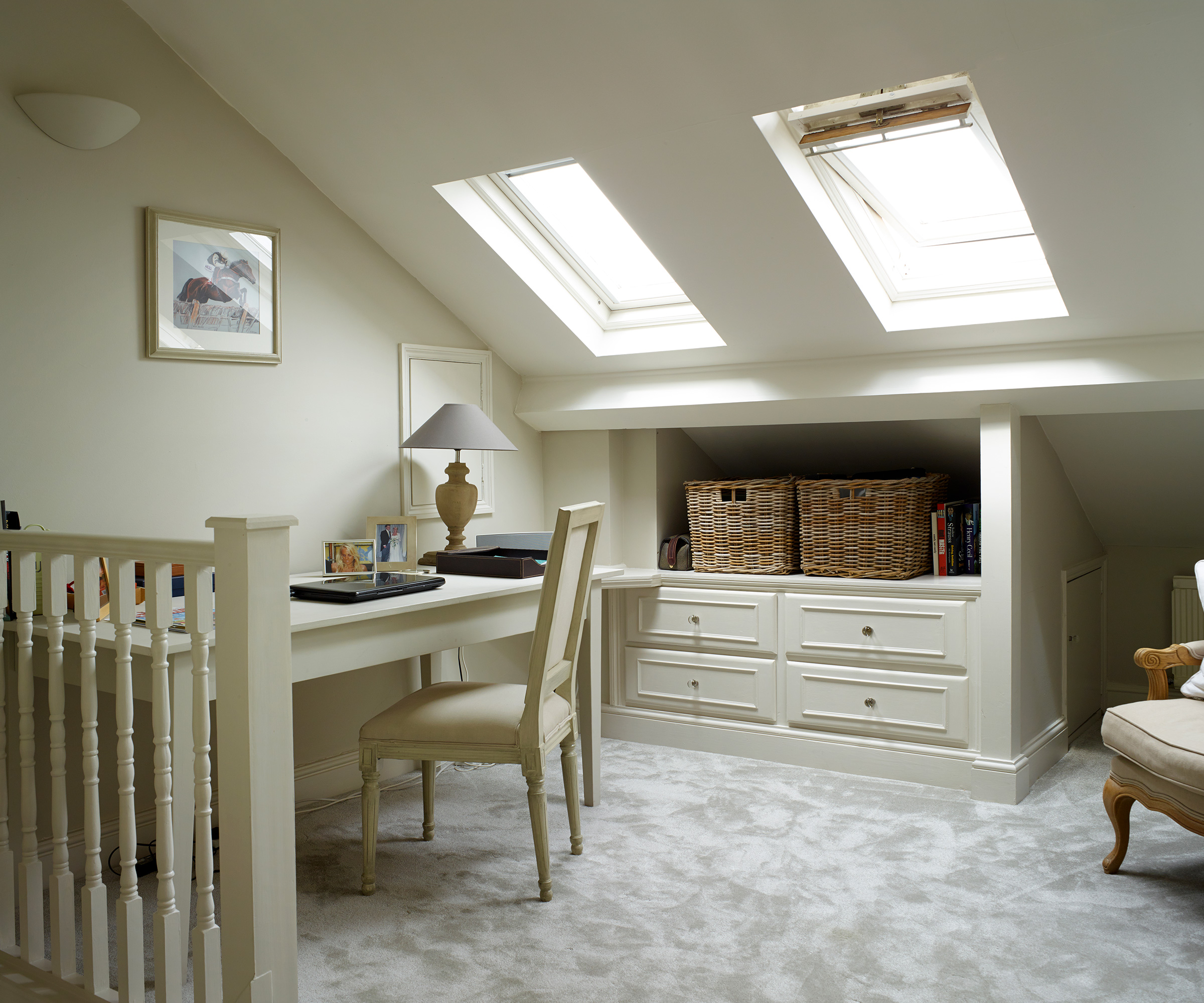
The location of your home office should be somewhere away from the hustle and bustle of everyday life, particularly if you regularly work from home and have children. A loft conversion can make the ideal spot for a work space, but you will need to ensure you provide plenty of storage and think through the positioning of any screens beneath roof windows to avoid glare.
This peaceful loft home office, within a Velux loft conversion, uses built-in furniture to provide storage and the positioning of the desk has been carefully considered too.
3. Give children their own space

Children of all ages can really enjoy feeling that their bedrooms are their very own private space — so tucking one into a loft conversion is a brilliant idea. In some cases it will be possible to squeeze two small children's bedrooms into a loft conversion, or to include ensuite bathroom ideas.
This fun-filled kid's bedroom features built-in, custom made furniture that has been designed to take into account the sloping ceiling. The cabin bed allows for drawers and a wardrobe beneath and the full height wall has been fitted with a climbing wall.
4. Be smart with a bathroom loft conversion layout

Loft conversion bathrooms make so much sense and while there are a few extra considerations to bear in mind, need not be expensive or complicated to design.
"With such a wide range of bathroom fittings available these days, it’s not hard to find quality fixtures for a compact space, while its position at the top of your house lends itself well to bringing huge amounts of natural light into the space," says homes and interiors journalist Rebecca Foster.
In this smart bathroom scheme, the shower has been located in the highest point of the room, while the frameless screen gives a continental wet room feel to the space.
5. Plan early on to make the most of the space

Converting a loft into a usable room is a great idea for those who want to add some extra space without encroaching on the garden. They key to a successful design is to plan what the new area will be used for early on.
Whether it's a new master bedroom suite away from the hustle and bustle of downstairs, a home office, or an extra living room as children become teenagers, loft conversions are best designed with a firm purpose from the off.
6. Use a dormer loft conversion for extra headroom

Could a dormer loft conversion provide the space you need? While converting a loft is possible without the addition of dormer windows they are a great way to provide a little extra headroom, meaning every inch of the floor space is utilised — while saving a few bumped heads along the way.
This stunning dormer loft conversion has used the vertical section of wall for a huge picture window, flooding the space with light and ensuring fantastic views from the comfort of the bed.
7. Include a rooflight in a dormer loft extension

While adding a rooflight to your dormer loft conversion might add a little to your loft conversion costs, the results can be truly stunning.
The deep dormer window designed by Amos Goldreich Architecture to extend this loft conversion space could have created a tunnel-like effect, but by incorporating windows around the dormer, including a rooflight above, the space is filled with light, creating the perfect spot for a bit of yoga.
8. Use the dimensions of the space as a starting point

If a dormer extension is not possible, make the most of a smaller space by creating features from alcoves, fireplace flues and, of course the sloping ceilings which go hand-in-hand with in so many loft conversions.
This example injects natural light into the space thanks to the inclusion of a rooflight and has positioned the toilet and smaller bathroom units under the eaves, freeing up space at the apex for a shower and the sink.
9. Use interesting cladding to highlight your conversion

There is no reason why your new loft conversion shouldn't stand out as a new addition — and using metal cladding to finish it off is a great way to do this.
While extending their Victorian terrace, the owners of this house used bedroom loft conversion ideas to create a new master suite. Large sliding windows were added, as was a movable external screen made from corten steel to give the couple privacy in both the bedroom and the adjoining bathroom.
A partition wall was included behind the bed to maximise space and act as a private dressing area. Attention to detail in the new bedroom makes it a sanctuary from the busy downstairs area.
10. Think about furniture positioning early on

Deciding on the positioning of furniture right from the start will save a lot of headaches (and costs) further down the line. Work out what will be included in the new space and from there plan plug sockets, light fittings and any built-in loft storage ideas accordingly.
Here, this small loft conversion has ingeniously positioned the compact radiator at the lowest point of the room, out of the way, while the route around the bed has plenty of headroom.
11. Don't discount a split-level layout in the loft
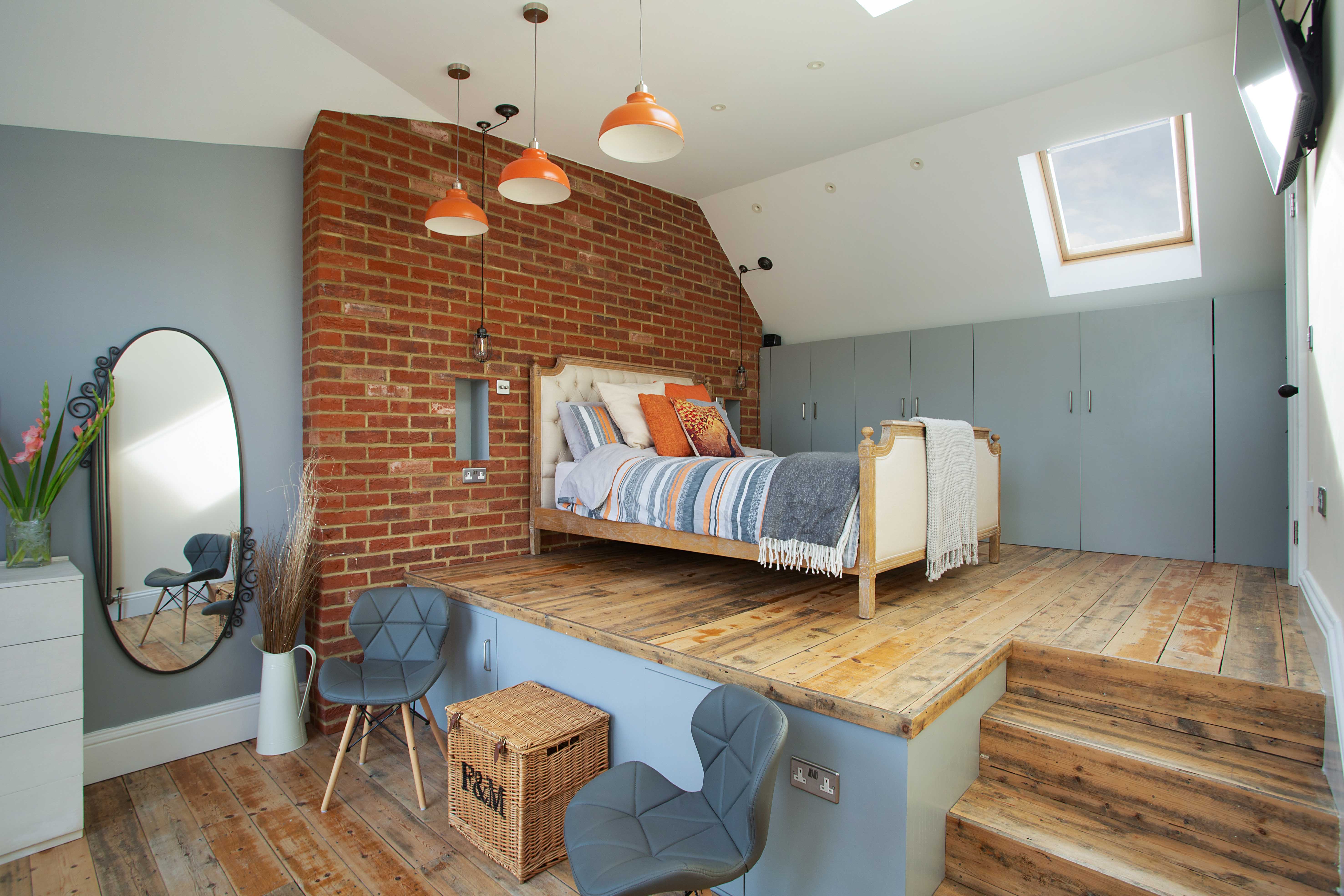
Split level set ups are one of our favourite loft conversion layout ideas and are a great way to break open plan spaces up into zones without the use of physical divides which can make an area feel smaller or block natural light from penetrating fully.
In this loft extension, designed by Sean and Stephen Architects, a split level design helps to zone the open plan space, while retaining the light throughout and creating a sense of openness.
12. Keep stair positioning at the forefront of your mind

Designing loft conversion stairs needs a great deal of thought if you want to ensure you are making the best use of space at the same time as complying with the building regulations relating to this aspect of house design.
"In an ideal situation, your loft conversion stairs would be above the existing stairs as this is the most space efficient solution," says chartered surveyor Ian Rock. "Ensuring that there’s the right amount of headroom above your loft conversion stairs is of fundamental importance, as it can be virtually impossible to rectify matters retrospectively," continues Ian.
In this project, the stairs leading to the loft have been positioned directly above the main stairs ensuring a good flow and use of space.
13. Tie in any new additions for uniform look
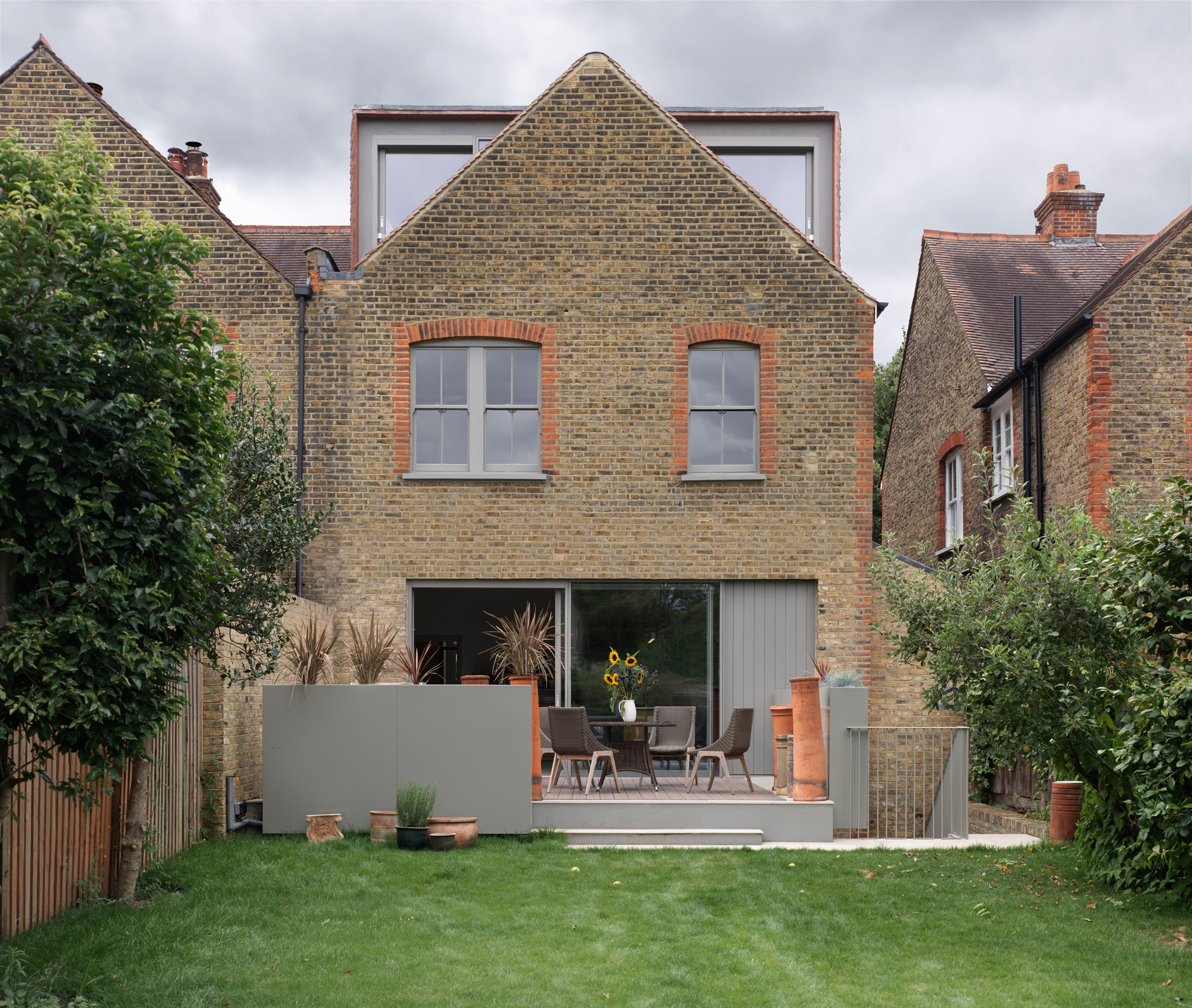
Whatever types of loft conversion you have in mind, bear in mind that if your conversion is going to have an impact on the external appearance of a house, even more care needs to go into its design to ensure that it is a beneficial addition as opposed to one that looks horribly out of place.
This loft conversion, with dormer extensions, beautifully unites the new additions with the existing house by repainting windows and utilising a similar rusty-coloured brick around the windows.
Finished with large sliding doors which open out to the new patio area (both in the same grey hue) has maximised the available space effortlessly.
14. Pack a big punch with a small loft conversion

Even a small loft conversion – such as some terraced house loft conversions – is a new space full of opportunity so be sure to plan from the start what the new room will be used for to maximise design opportunities.
This compact loft conversion with mansard roof extension features a Juliet balcony in the boutique bedroom as well as the ultimate luxury, a freestanding tub.
15. Keep things streamlined in compact spaces

Where usable space is an issue, make a feature of a streamlined design. Keep fussy details to a minimum and focus on highlighting the architectural form of the space.
The DHaus Company converted this loft in a Haringey home which had a turret-style roof, meaning it didn’t require an extension to achieve head height. However, it’s a long narrow room, so their design, which factors in a large, irregular rooflight, is simple, with just a bed and concealed LED lighting to illuminate the space.
16. Pick rooflights to give the illusion of more space

Many projects are unable to extend with dormer windows due to budget constraints or planning restrictions but that's not to mean loft conversions aren't worth the effort.
Loft conversions with low head heights can be made to feel luxurious by using rooflights. Pair that with a smart layout, ingenious built-in storage and a freestanding tub like this project and you'll be onto a winner.
17. Highlight the roofline to create a feature

A loft conversion undoubtedly means dealing with the shape of your roof as part of the design. This often means you end up with some pretty interesting forms — think about the ways in which you can draw attention to and highlight this.
In this loft conversion by Syte Architects, as part of the lighting design, LED lighting has been across the line of the roof to create a feature that defines the space and removes the need for bulky overhead lighting.
18. Make the most of high-level views

Staircase design up to a loft conversion is often forgotten about but as they stitch together the new space and the rest of the house, they're fundamental to the success of a project. Your loft stairs also offer the opportunity to include some windows within the stairwell or from any landings to give some pretty stunning views.
This loft conversion and terrace extension utilised three half landings to cleverly create the illusion of extra space before leading out to the new rooftop garden.
19. Use your loft conversion to add wow-factor
Before

After

As well as adding useful extra space without increasing the footprint of the house, a loft conversion can also be a great way to enhance the kerb appeal of your home.
Adding a dormer loft extension to this property not only doubled the size of the dated 1960s bungalow, but it also transformed it into a light, bright and spacious home that reflects its coastal location.
The homeowners reserved a large part of the new second storey for a luxurious master suite, which has a stunning vaulted ceiling, a Juliet balcony and a large rooflight overhead.
20. Create a sanctuary in a small loft conversion

Light, bright and away from the hustle and bustle of daily life, adding a home office into a loft conversion is the perfect choice for those struggling to work from their dining room table.
Working from home is now becoming the norm so a dedicated office space is up there on the list of spaces we now need.
Using a loft conversion for your home office design is a great way to escape the main house and gives you the chance to shut down your laptop, shut the office door and go down to your relax in your home without being tempted to log back on - out of sight, out of mind!
21. Kit your loft conversion out for use as a home gym

It may not sound like the most obvious of applications for a loft conversion, but it can provide the perfect space for a home gym. Because of access issues, it’s unlikely that bulky cardio machines will fit up the loft stairs, however a loft conversion should provide ample space for a weights gym.
While a proper conversion should factor in a floor that’s strong enough to deal with the extra weight of, well, weights, it’s a good idea to mention this as a potential use for the space at the start of the project.
22. Design a tranquil master bedroom

After some stunning master bedroom ideas? Converting a loft into a bedroom or master suite is a hugely popular idea, adding value as well as useful extra space.
Particular consideration should be given to blinds when creating a bedroom — the light that comes in from roof windows tends to be bright and you don’t want to be woken at the crack of dawn.
There are several options when it comes to choosing blinds for roof windows — but in a bedroom, a blackout blind is a must. Choose one that is designed to prevent light seeping in from the sides. Both Velux and Blinds 2go offer a large range of blackout blinds.
You will also need to provide clothes storage. Under-eaves storage, using space too low for freestanding cupboards, rails or shelving, is a great idea. Alternatively, look into having fitted wardrobes made to suit your specific space.
This luxurious space is flooded with natural light thanks to the twin aspect large rooflights. The copper bathtub further increases the opulent feel.
23. Aim to add a bathroom into the loft

It can be really useful to locate bathroom facilities in a loft conversion. A loft bedroom usually warrants more extensive bathroom facilities, whereas a study or games room might only need a toilet and basin.
A loft bathroom doesn’t have to take up much space, but make sure there is sufficient headroom. A minimum floor space of around 1 x 2.6m is sufficient for a shower room with WC and basin — head height will be required over the shower, but the ceiling can slope where the toilet cistern is.
24. Create a whole master suite in the loft

Create a hide-away from it all that's only for you by building in both a master bedroom and en suite in the loft conversion.
An extra shower room or small bathroom adds plenty of value to a house while offering a spot to release your personality on the new space, as in this quirky master bedroom.
This loft conversion features a bedroom with ensuite — storage is taken care of with clever built-in cupboards under the eaves.
25. Locate a second living room in the new space

An extra living room in the loft space is a great idea — perhaps you have older children who might appreciate their own space or maybe you like the idea of a second TV room or just a chill out space to escape up to at the end of a long day.
If you are in need of some inspirational living room ideas, take a look at this stylish room. It features an exposed brick wall and enormous rooflights that draw in loads of natural light and give stunning rooftop views. Note the smart, low, horizontal column radiator that slots nicely into the available space.
26. Be creative to overcome planning issues
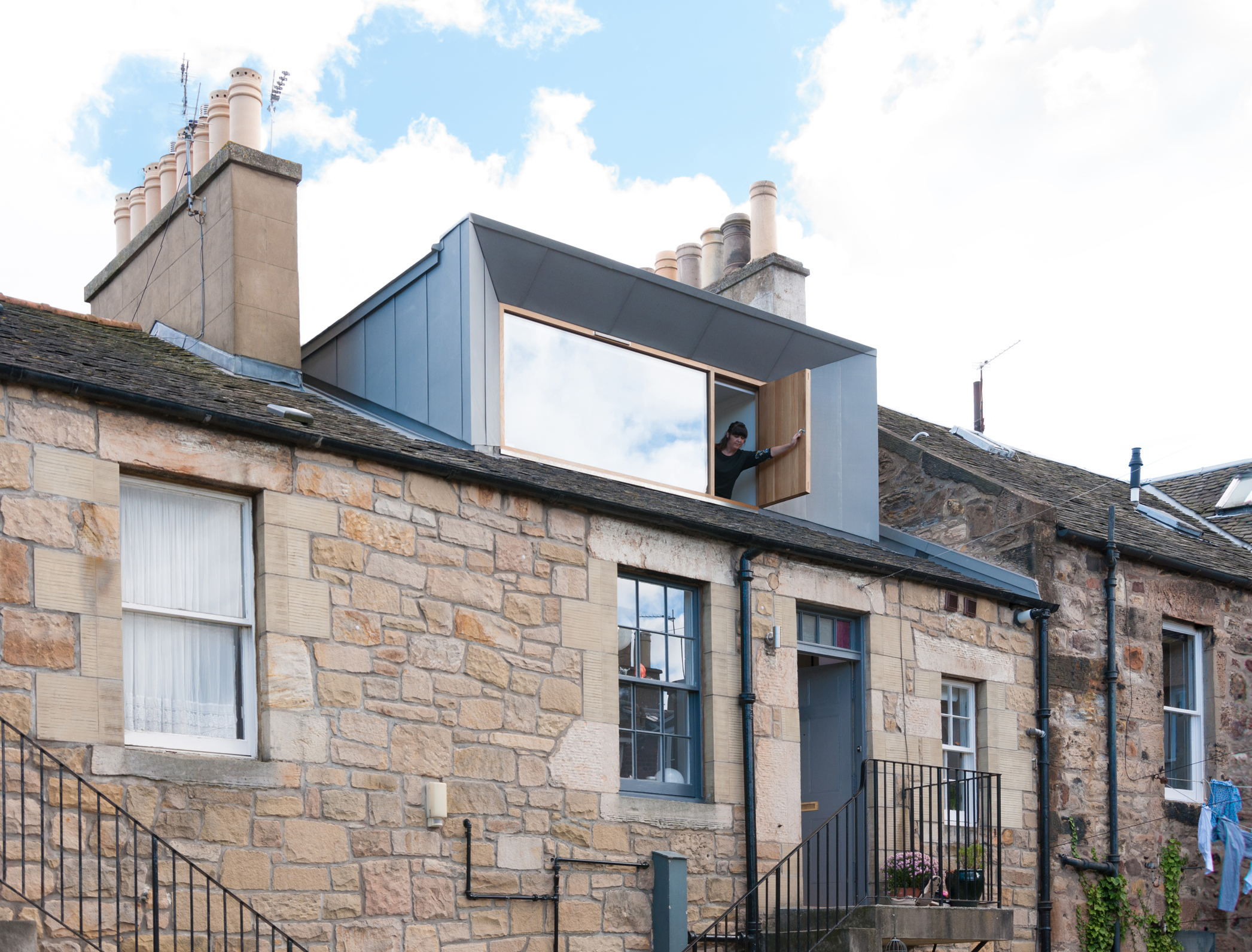
Adding a dormer window to your loft can be a straightforward way to incorporate more space overhead.
However, in this loft conversion by Konishi Gaffney Architects, strict planning rules within this local conservation area meant installing a conventional dormer window wasn’t possible. Instead, a low profile, long dormer was fitted meaning it has less of a visual impact than a dormer positioned close to the eaves. The addition has been clad in anthracite zinc.
28. Get yourself a space to escape in your conversion

A loft conversion can become the perfect spot for a games room, hobbies room or den. Take time to really consider what you will be using the space for — a home cinema or music room will have different lighting requirements than a hobby space, for example.
If the activities taking place here are likely to be noisy, give some thought to soundproofing. You need not only to consider footfall noise but, if you are in a terrace or semi-detached house, the transference of noise from one house to the next.
This enviable room has been soundproofed to ensure the rest of the household isn't disturbed by the results of all the music equipment. The glazed doors really ensure the space is beautifully lit.
29. Give some thought to your artificial light sources

When planning your loft conversion, make sure you fully consider lighting design ideas to achieve a higher-quality space which can be enjoyed at any time of day. Lighting design ideally should be made up of several different types of light, including task lighting and ambient.
In this top floor master suite, Neil Dusheiko Architects concealed dimmable LED lights have been fitted along the perimeter to give the timber structure a soft glow.
30. Make your loft conversion child friendly

A great idea for a loft conversion is to turn the space in the eaves into a den or for your children's bedroom ideas. They can use the space to sleep, play and hang out.
Bespoke built-in storage will help to keep clutter under control, and keeping walls and floors light will help a smaller space feel bigger. Bursts of colour on feature walls (or ceiling slopes) can help to zone the room, while bean bags and cushions in contrasting colours will provide flexible comfort.
Use practical, easy-to-clean finishes as has been done in this fresh and airy space.
31. Build an entertaining space into your loft
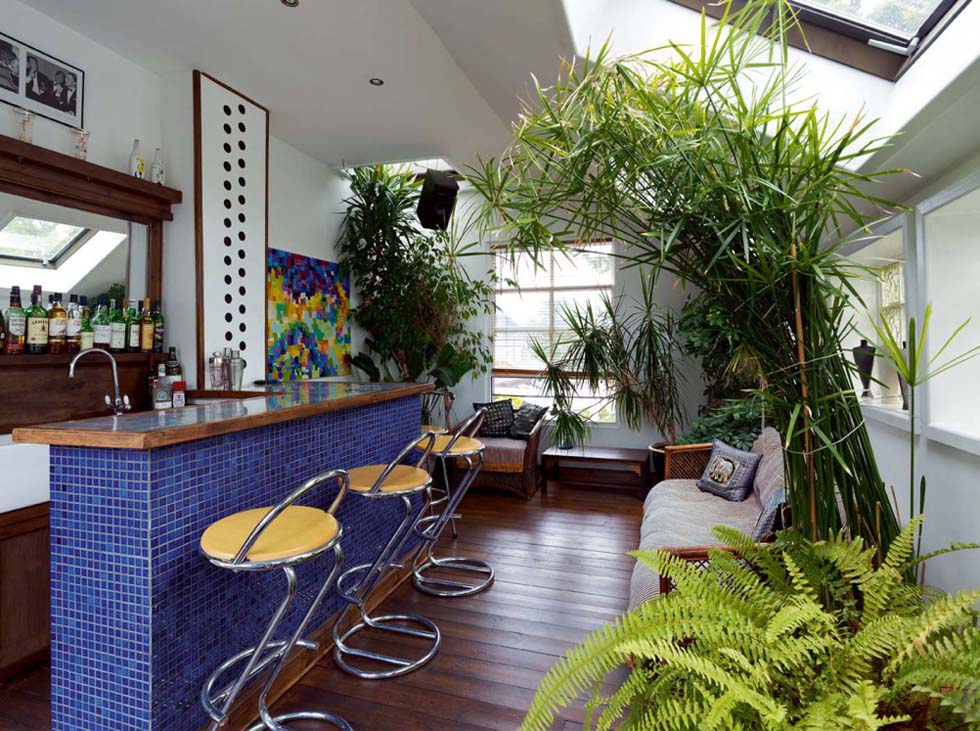
With more of us spending time at home, having a dedicated space to entertain is on the wish-list. A home bar is a quirky idea and will work in any size loft space.
Sloping ceilings and odd angles will work to your advantage when it comes to storage or seating.
Go bold with colour, plants and soft furnishings, or keep things neutral for a more understated look. If you have opportunity to create a roof terrace, then choose the same flooring for both the indoor and outdoor area to make them feel like one cohesive space.
32. Focus on designing a loft room with a view

Maximising natural light is a great idea for a loft conversion and being up high provides a great opportunity to take advantage of your views.
Think about whether you could incorporate some full-height glazing, either fixed or opening, or rooflights. French or sliding doors opening out to a Juliet balcony mean light, fresh air and a sense of space can all be achieved, but the feasibility of adding these will depend on the type of conversion you are carrying out.
This gorgeous loft bedroom enjoys fantastic treetop views thanks to the picture window and the seating that has been built into it.
33. Make a multi-functional space in your loft

If you have older children, housemates or relatives living with you, then creating a self-contained space for them in the loft can be a great use of space.
Equally, if you live in a flat and own the loft space, moving your living space up-top can offer a great opportunity to create a multi-functional space that's full of light and can take in the views.
This converted space combines a kitchen, dining room and living area all in one.
34. Design your decor scheme with care

Make sure that the interior scheme you choose for your new conversion reflects what you will be using it for. A bedroom, for example, will benefit from a colour scheme that soothes and feels warm and inviting and you will also need to pay attention to developing bedroom lighting ideas, while a home office might suit a fresher, more lively scheme.
Darker tones can be paired with metallics to create a luxurious yet cosy feel in an attic master suite — and in this example, the bespoke dark grey low-level partition cleverly conceals a dressing area from the large-format window opposite while still letting in the light.
35. Incorporate alcoves and recesses into the design

By their very nature, loft conversions rarely feature straight lines and they can often present homeowners with some interesting challenges when it comes to working with nooks, crannies, alcoves and unusual ceiling shapes and heights.
When Mustard Architects created a modern open-plan home office on the top floor of this home they utilised the alcove in the existing brickwork to provide a handy space for storing office paraphernalia.
36. Turn a loft conversion into a rooftop sanctuary

There’s no reason why the top storey of your house shouldn’t benefit from access to outdoor space — and a roof terrace can be the perfect spot to enjoy some of the best views in the home.
Designed by Edward McCann Architects, this loft extension to a terraced house opens out onto a small outdoor terrace. Aluminium bifold doors have been used to maximise the width of the aperture, establishing a bright and breezy feel inside.
Do loft conversions require planning permission?
In many cases it is possible to build a loft conversion under permitted development, but you should not assume that this will be the case for your particular project.
"There are certain criteria your conversion would need to meet to qualify for this, but even if your scheme does qualify, you’d be well advised to get this fully confirmed by applying to your local council for a Lawful Development Certificate first," advises planning consultant Simon Rix.
The type of loft conversion you build will also have an effect on whether or not planning permission is required. Mansard loft conversions will almost always require a planning application, for example.
What are the headroom requirements for loft conversions?
"To see whether your loft makes the grade, simply stand under the highest point of the roof, usually in the centre of the loft, and check whether there is at least 2.8m clear vertical space," advises Ian Rock. "This may sound overly ambitious, but the available space will shrink once the new floor structure is constructed and the rafters are lined with thick layers of insulation.
"In most cases, Building Regulations stipulate a minimum of 2m clear headroom along the entire length," continues Ian. "However, when it comes to loft stairs, the rules are more relaxed. Here the minimum headroom on the low-ceiling side can be as shallow as 1.8m rising to 1.9m in the centre of the staircase width and 2m on the inner side."

Chartered surveyor Ian Rock MRICS is a director is Rightsurvey.co.uk and the author of eight popular Haynes House Manuals, including the Home Extension Manual, the Self Build Manual and Period Property Manual.
Ian is also the founder of Zennor Consultants. In addition to providing house surveys, Zennor Consultants provide professional guidance on property refurbishment and maintenance as well as advising on the design and construction of home extensions and loft conversions, including planning and Building Regulations compliance.
Ian has recently added a 100m2 extension to his home; he designed and project managed the build and completed much of the interior fit-out on a DIY basis.

Simon Rix is a professional planning consultant, who began his career working in local government in the 1990s. He was a council officer and later an elected councillor, so he knows how the planning system works from both sides. He went on to set up Planix.UK Planning Consultants Ltd; a consultancy company that advises self builders, home extenders and those taking on small to medium-sized building projects on planning permission.

Rebecca began her journalism career writing for a luxury property magazine in Bangkok, before re-locating to London and becoming a features editor for a self build magazine. She is an experienced homes and interiors journalist and has written for many homes titles including Homebuilding & Renovating, Ideal Home and Period Living.
She has expertise on a wealth of topics — from oak frame homes to kitchen extensions. She has a passion for Victorian architecture; her dream is to extend an 1800s house.
Get the Homebuilding & Renovating Newsletter
Bring your dream home to life with expert advice, how to guides and design inspiration. Sign up for our newsletter and get two free tickets to a Homebuilding & Renovating Show near you.
Natasha was Homebuilding & Renovating’s Associate Content Editor and was a member of the Homebuilding team for over two decades. In her role on Homebuilding & Renovating she imparted her knowledge on a wide range of renovation topics, from window condensation to renovating bathrooms, to removing walls and adding an extension. She continues to write for Homebuilding on these topics, and more. An experienced journalist and renovation expert, she also writes for a number of other homes titles, including Homes & Gardens and Ideal Homes. Over the years Natasha has renovated and carried out a side extension to a Victorian terrace. She is currently living in the rural Edwardian cottage she renovated and extended on a largely DIY basis, living on site for the duration of the project.

